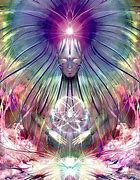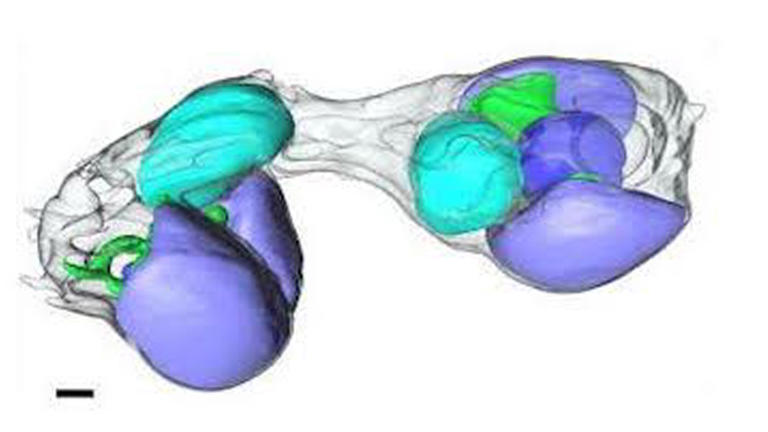SCIENTISTS DISCOVER 1ST-OF-ITS-KIND CELL PART BORN FROM A SWALLOWED MICROBE















Scientists discover 1st-of-its-kind cell part born from a swallowed microbe
In a groundbreaking discovery, scientists uncovered the first known structure in complex cells that's capable of drawing nitrogen from the atmosphere and converting it into a form that the cell can use.
They've dubbed the newfound cell part the "nitroplast." And according to two recent studies, the researchers think it likely evolved 100 million years ago.
The nitroplast probably developed from a bacterium in the ocean, after the microbe was engulfed by an algal cell. The bacteria and algae were previously thought to be living in symbiosis, with the microbe supplying nitrogen in a form the algae could use and the algae providing the microbe with a home.
But it turns out that the microbe took on a new form long ago, becoming a full-fledged cell structure, or organelle, with a metabolism directly linked to that of the algae.
"It's very rare that organelles arise from these types of things," Tyler Coale, a postdoctoral scholar at the University of California, Santa Cruz (UCSC) and lead author of one of two recent studies that identified the nitroplast, said in a statement.
The discovery is only the fourth known example in Earth's history of "primary endosymbiosis," a process by which a eukaryotic cell — a cell where DNA is enclosed in a nucleus, as in all animals, plants and fungi — swallows a prokaryotic cell, which lacks a nucleus. In this case, a eukaryotic algal cell swallowed a prokaryotic bacterial cell.
"The first time we think it happened, it gave rise to all complex life," Coale said, referring to the evolution of mitochondria, the cells' powerhouses, approximately 1.5 billion years ago. "Everything more complicated than a bacterial cell owes its existence to that event." That includes humans.
The second known instance of endosymbiosis took place roughly 1 billion years ago, giving rise to chloroplasts, which power photosynthesis, and triggering the evolution of plants. The third known event may have given rise to a lesser-known organelle known as the chromatophore, a pigment-filled structure in the skin of cephalopods, such as squid and octopuses, that allows them to change color.
Scientists first discovered the microbe-turned-nitroplast in 1998, although at the time, they didn't yet know the microbe was a true organelle.
In that work, a team led by Jonathan Zehr, a distinguished professor of marine sciences at UCSC and lead author of the second recent study, recovered a short DNA sequence of the microbe from Pacific Ocean seawater. Zehr and his colleagues determined that the DNA belonged to a nitrogen-fixing cyanobacterium, which they called UCYN-A. (Nitrogen-fixing refers to the process of transforming nitrogen into a usable form for cells.)
The discovery coincided with work at Kochi University in Japan, where scientists figured out how to culture the algae that carry UCYN-A in the lab. This enabled Zehr and collaborators to compare the size of UCYN-A in different species of these algae, which belong to a related group called Braarudosphaera bigelowii.
The researchers published this work March 28 in the journal Cell, reporting that the growth of UCYN-A and its host cells are synchronized and controlled by the exchange of nutrients. This is "exactly what happens with organelles," Zehr said in the statement. "If you look at the mitochondria and the chloroplast, it's the same thing: they scale with the cell."
To confirm these results, Zehr and additional researchers conducted a second study, which was published April 11 in the journal Science. Its results indicated that UCYN-A imports proteins from its host cell, suggesting that the former microbe had ditched some of its cellular machinery, relying instead on its host to function. In other words, the once-bacterium had become a cog in the machinery of its host.
"That's one of the hallmarks of something moving from an endosymbiont to an organelle," Zehr said. "They start throwing away pieces of DNA, and their genomes get smaller and smaller, and they start depending on the mother cell for those gene products — or the protein itself — to be transported into the cell."
UCYN-A also replicates at the same time as its host cell and is inherited like other organelles, sealing the discovery of the nitroplast, according to the statement.
Articles - Latest
- Earthquakes can trigger quartz into forming giant gold nuggets, study finds
- Linda Nolan, singer and television personality, dies aged 65
- Sly Stone, pioneering funk and soul musician, dies aged 82
- Dangers of an overloaded car include:
- Natural Disaster today
- Japan earthquake: Kushiro shakes for 'too long' as 6.1 mag tremor hits
- 'Cult' members jailed over coroner kidnap plot
- Flood risk threatens Swiss valley after glacier destroys village
- Thailand Grapples with Floods and Economic Shifts: Government Response, Community Resilience, and Market Predictions
- Powerful hailstorm floods buildings and streets in Gniezno
- The Significance of the 49-Day Journey After Death
- Killing prisoners for transplants: Forced organ harvesting in China
- Southern Japan hit by 6.6-magnitude quake near Nankai Trough, tsunami warnings lifted
- Peru’s coastline battered by tsunami-like waves one day after country declares environmental emergency
- California fires live updates: ‘Dangerous’ winds return as residents are warned over threat of new wildfires
- Osibisa founding member and singer Teddy Osei dead at 88
- Oliviero Toscani, photographer behind shock Benetton ads, dead at 82
- California LA Mayor Karen Bass awkwardly ignores questions from reporter about California fires
- UK set for more freezing weather as homes and businesses deal with flooding
- Jean-Marie Le Pen dead at 96: His political career through the years
- Jimmy Carter, former US president, dies aged 100
- ‘Jazz’s most significant composer’ Benny Golson dies at 95
- Billionaire founder of fashion chain Mango dies in accident
Articles - Most Read
- Main
- Contact Us
- The science behind Ouija boards
- Cosmic Consciousness - What is Cosmic Consciousness-2
- Cosmic Consciousness-Introduction
- Cosmic Consciousness - Introduction-2
- MASSIVE 6.1 MAGNITUDE EARTHQUAKE HITS NEW ZEALAND AS NATION STILL REELING FROM CYCLONE
- ARCHAEOLOGISTS UNRAVEL THE TRUTH OF APHRODITE, GODDESS OF LOVE, ON VALENTINE'S DAY
- Cosmic Consciousness First Words - 1V - 2
- The Human Condition-Thomas Keating
- Cosmic Consciousness First Words - V -
- Cosmic Consciousness V - 2
- Cosmic consciousness - First Words - IV
- Shakyamuni Buddha or India the 1st “Black Revolutionary Hero.”
- Cosmic Consciousness - What is Cosmic Consciousness?
- Evolution and Devolution-Chapter 2
- The Human Condition-2-Thomas Keating
- The Human Condition - Thomas keating-3
- Cosmic Consciousness-On the Plane of Self Consciousness
- Drinking From The Mountain Stream - Milarepa
- The Human Condition - 4
- Cosmic Consciousness - 3 - On the Plane of Self Consciousness
- The Human Condition - 6
- Evolution and Devolution-Chapter 1
- On the Plane of Self Consciousness - 2
- The Human Condition - 5
- Milarepa's World-2
- Milarepa's World
- Contemplation and the Divine Therapy - 2
- The Buddhist System of Liberation - 2
- On the Plane of Self Consciousness IV
- The Buddhist System of Liberation
- JERRY RAWLINGS, GHANAIAN STRONG MAN WHO CAME TO POWER IN A COUP BUT INTRODUCED DEMOCRACY – OBITUARY
- On the Plane of Self Consciousness IV - 2



